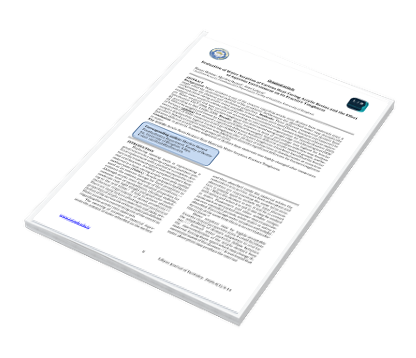Fracture Resistance Assessment of Wide Canalled, Radicularly Obturated Teeth Using Modified Fiber Post Systems With & Without Accessories
DOI:
https://doi.org/10.37376/ljd.v4i1.1911Keywords:
Fracture Resistance, Radicularly Obturated Teeth, Fiber Post SystemsAbstract
Background: Wide canalled endodontically treated teeth present a common clinical challenging problem.
Objectives: Aiming to perform fracture resistance assessment of modified fiber post systems with differ-
ent forms of customization as an effective treatment modality in the wide canalled teeth.
Methods: Freshly extracted twenty-eight maxillary central incisors were collected. Teeth were resected
coronally above the cervix, radiculary prepared and obturated. Resected teeth were randomly grouped
according to fiber post modification as (Group I) Custom-made post by fiber impregnated strands (CMF).
(Group II) Customized fiber posts by composite (CF). (Group III) Prefabricated fiber post with accessory
posts (PA). (Group IV) Prefabricated fiber posts without accessory posts (PNA). All samples were mounted
on universal testing machine for fracture resistance measurements. All measurements were recorded and
statistically analyzed One-way ANOVA testing along with pair-wise Tukey’s post-hoc testing.
Results: The modified fiber post system studied has been significantly varied in the results, declaring that
Prefabricated fiber with Accessory (PA) group recorded the highest mean ± SD value of fracture resistance
(373.02±27.967 N) followed by Custom made resin impregnated fiber (CMF) group which recorded mean
± SD value of (357.48±28.748 N) then Prefabricated fiber post without Accessory group with mean ± SD
value of (264.41±25.175 N) meanwhile the lowest mean ± SD value was recorded with Customized fiber
post with composite (CF) group (246.4±20.948 N).
Conclusion: Accordingly with the results elaborated it can be speculated that utilization of accessory posts
will provide a safe and rigid alternative in those cases by decreasing the interpenetrating thickness of ce-
menting resin on mesial and distal sides of the master post cemented and creating a better root canal-post
adaptation.
Downloads

Downloads
Published
How to Cite
Issue
Section
License
Copyright (c) 2022 Libyan Journal of Dentistry

This work is licensed under a Creative Commons Attribution-NonCommercial-NoDerivatives 4.0 International License.







